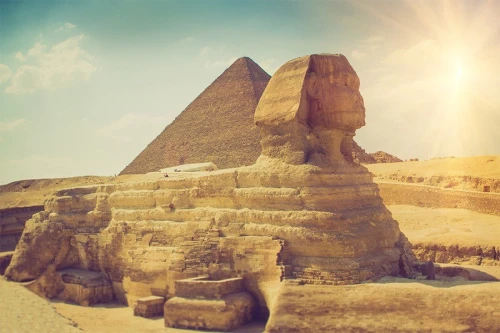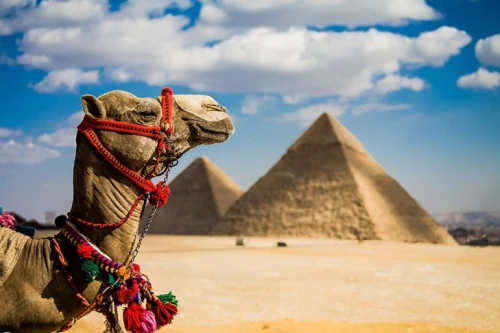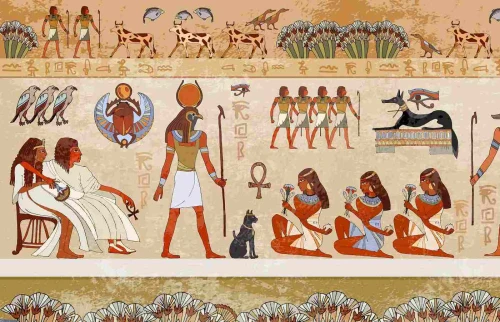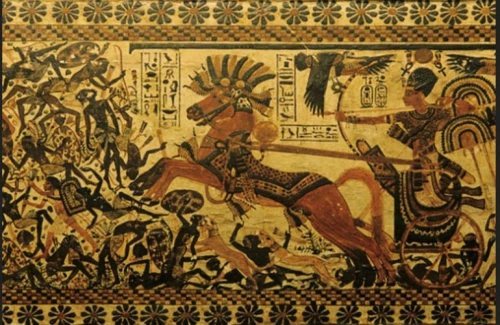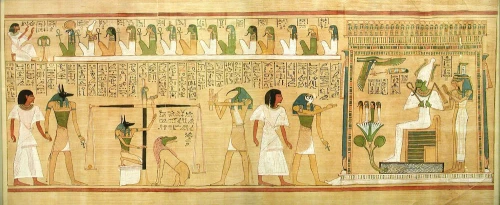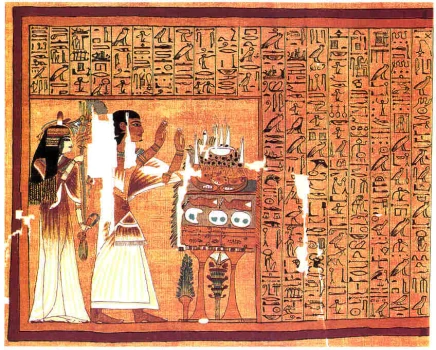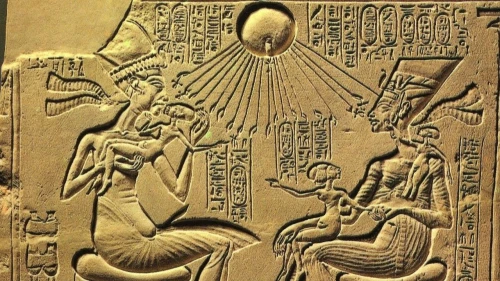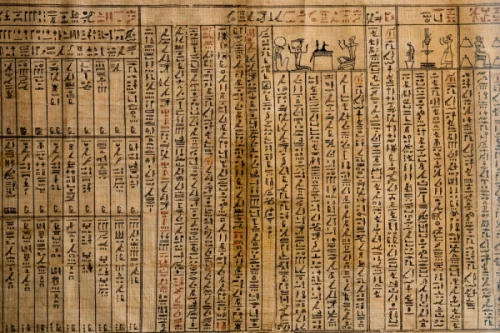
FUNERARY TEXTS Funerary texts are prayers, spells, and incantations intended to help the deceased reach the next world. Called Pyramid Texts, the first funerary texts originated in the Old Kingdom (2686 - 2181 B.C). Carved on the walls of the burial chamber of the pyramid of the Fifth Dynasty King Unas (c. 2345 B.C), the Pyramid Texts are the first large body of written texts in Egypt, and they express a well-developed idea of the afterlife.
The Pyramid Texts are concerned primarily with the protection of the body of the king and offer suggestions like cast the sand from your face. In some texts, the king tries to bully the gods into accepting him as one of them. Versions of the Pyramid Texts, comprising some 800 spells in all, are found in eight later pyramids dating from the Sixth to the Eighth Dynasties (2345 - 2125 B.C). The spells appear in no particular order, and not every spell was included in every pyramid. During the Middle Kingdom (2055 - 1650 B.C), funerary practices were no longer restricted to royalty and the wealthy.
Now ordinary people could also have a proper funeral and an afterlife in the next world. With this development, new religious texts were needed. The Pyramid Texts were expanded and became the Coffin Texts. Called the Book of Two Ways, Coffin Texts were guided the deceased in their quest for the next world. They were inscribed in vertical rows on the wooden coffins popular during the period. One of the innovations of the Coffin Texts was that the sun god was no longer supreme. Osiris, the god of the Underworld, became the patron of the dead, for they were destined to spend eternity with him.
The Coffin Texts also developed the idea of the Field of Reeds, where the deceased would spend an undetermined amount of time plowing, sowing, and harvesting—working in the fields. It was at this time that the idea of a magical substitute worker was initiated. Mummiform statuettes called ushabtis, complete with magical spells to activate them would perform the agricultural tasks required of the deceased. When texts became too numerous to inscribe on coffins, they gave way to the Book of the Dead, a New Kingdom (1550–1069 b.c.) innovation that continued to assist the deceased on their journey to the next world. The Book of the Dead is a series of magical spells, more than half of which came from the Pyramid Texts and Coffin Texts.
They include a series of vignettes illustrating various chapters. The virtue of the Book of the Dead was that it could be written on papyrus and copied
easily. Because the Book of the Dead developed from a series of earlier writings, it had no particular organization, and chapters were sometimes repeated or omitted in error when they were copied. Eventually, there were several different versions of the Book of the Dead, but the most important chapters were included in each one.
A later group of assorted texts, derived in part from the Book of the Dead, have been grouped in the modern designation of the Book of the Netherworld. These texts, unlike the Book of the Dead, an assortment of magical spells, prayers, and incantations, are religious essays relating, in step-by-step detail, the sun god’s journey through the realm of darkness each night. They also describe the World of the Beyond. The Books of the Netherworld included the Amduat, the Book of Caverns, the Book of the Earth, and the Book of Gates.
 English
English
 Spain
Spain

